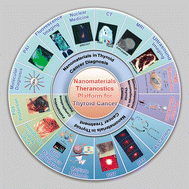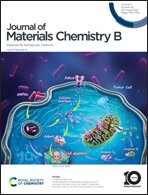Nanomaterials: a promising multimodal theranostics platform for thyroid cancer
Abstract
Thyroid cancer is the most prevalent malignant neoplasm of the cervical region and endocrine system, characterized by a discernible upward trend in incidence over recent years. Ultrasound-guided fine needle aspiration is the current standard for preoperative diagnosis of thyroid cancer, albeit with limitations and a certain degree of false-negative outcomes. Although differentiated thyroid carcinoma generally exhibits a favorable prognosis, dedifferentiation is associated with an unfavorable clinical course. Anaplastic thyroid cancer, characterized by high malignancy and aggressiveness, remains an unmet clinical need with no effective treatments available. The emergence of nanomedicine has opened new avenues for cancer theranostics. The unique features of nanomaterials, including multifunctionality, modifiability, and various detection modes, enable non-invasive and convenient thyroid cancer diagnosis through multimodal imaging. For thyroid cancer treatment, nanomaterial-based photothermal therapy or photodynamic therapy, combined with chemotherapy, radiotherapy, or gene therapy, holds promise in reducing invasiveness and prolonging patient survival or alleviating pain in individuals with anaplastic thyroid carcinoma. Furthermore, nanomaterials enable simultaneous diagnosis and treatment of thyroid cancer. This review aims to provide a comprehensive survey of the latest developments in nanomaterials for thyroid cancer diagnosis and treatment and encourage further research in developing innovative and effective theranostic approaches for thyroid cancer.

- This article is part of the themed collections: Journal of Materials Chemistry B Recent Review Articles and #MyFirstJMCB


 Please wait while we load your content...
Please wait while we load your content...